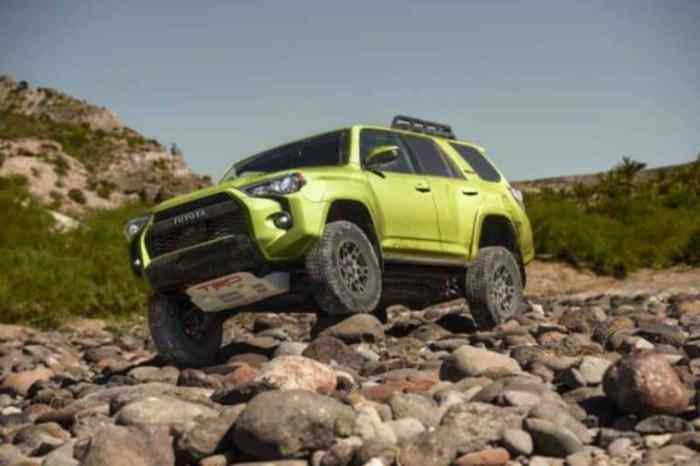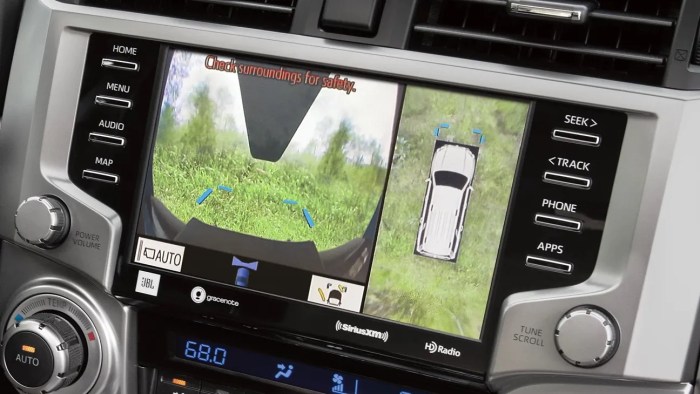Everything You Need to Know About the Toyota 4Runner’s AWD System – The Toyota 4Runner, a legendary SUV known for its ruggedness and off-road capabilities, boasts a sophisticated all-wheel-drive (AWD) system, or rather, a selection of them, depending on the trim and year. Understanding how this system functions is crucial for maximizing its performance and safety, whether you’re navigating challenging terrains or simply driving in inclement weather. This comprehensive guide delves into the intricacies of the 4Runner’s AWD systems, providing you with all the information you need to become a more informed driver.
Understanding Toyota 4Runner AWD Systems: A Deep Dive
Unlike many SUVs that offer a simple AWD system, the 4Runner’s setup varies depending on the model year and trim level. Generally, you’ll encounter two primary systems: Part-time 4WD and Full-Time 4WD (with variations within each). Let’s break them down:
Part-Time 4WD System, Everything You Need to Know About the Toyota 4Runner’s AWD System
The part-time 4WD system, often found in older 4Runner models and some base trims, is designed primarily for off-road use. It’s a mechanically engaged system, meaning the driver manually selects the 4WD mode using a transfer case lever. This system is not ideal for everyday driving on paved roads, as it can cause binding and reduced handling. Using part-time 4WD on dry pavement can lead to increased tire wear and potential drivetrain damage.
This system typically offers:
- 2WD (2-wheel drive): Power is sent only to the rear wheels for optimal fuel efficiency on dry paved roads.
- 4HI (4-wheel high): Power is distributed to all four wheels for improved traction in slippery conditions or on loose surfaces. This is suitable for snow, mud, or gravel, but not recommended for high-speed driving.
- 4LO (4-wheel low): This gear significantly reduces speed but increases torque, making it ideal for extreme off-road situations like rock crawling or steep inclines. It should only be used at low speeds.
Important Note: Engaging 4HI or 4LO on dry pavement at higher speeds can damage the drivetrain. Always engage 4WD on a loose surface before accelerating.
Full-Time 4WD System (Including variations like A-TRAC and Multi-Terrain Select)
More recent 4Runner models often feature a full-time 4WD system, offering a more refined and convenient driving experience. This system automatically adjusts power distribution between the front and rear axles based on driving conditions. This often includes advanced traction control systems. Key features of full-time 4WD often include:
- Automatic Power Distribution: The system constantly monitors wheel speed and traction, automatically sending power to the wheels with the most grip. This provides enhanced stability and control, especially in slippery conditions.
- A-TRAC (Active Traction Control): Toyota’s A-TRAC system works in conjunction with the full-time 4WD system to further enhance traction. It utilizes electronic braking to distribute power to the wheels with the most grip, preventing wheel spin and improving stability.
- Multi-Terrain Select (MTS): Found on higher trim levels, MTS offers various driving modes (Mud & Sand, Rock & Dirt, Loose Rock, Mogul, etc.) optimized for different terrains. Each mode adjusts throttle response, transmission shifting, and traction control for optimal performance.
- Crawl Control: This low-speed off-road assist system automatically manages throttle and brakes, allowing the driver to focus on steering in challenging off-road situations.
- Downhill Assist Control (DAC): Helps maintain a safe speed while descending steep inclines.
The full-time system is generally more suitable for everyday driving, offering improved traction in various conditions without the drawbacks of a part-time system. However, it’s still not designed for extreme off-roading in the same way as a dedicated off-road vehicle.
Maintaining Your 4Runner’s AWD System
Proper maintenance is crucial for the longevity and performance of your 4Runner’s AWD system. This includes:
- Regular Fluid Changes: The transfer case and differentials require periodic fluid changes according to the manufacturer’s recommended schedule. Using the correct fluid type is essential.
- Inspecting Drive Shafts and CV Joints: Regularly inspect the drive shafts and CV joints for wear and tear. Look for signs of damage, leaks, or unusual noises.
- Tire Rotation and Pressure: Maintaining proper tire pressure and rotating your tires regularly ensures even wear and optimal traction.
- Professional Inspections: Schedule regular inspections by a qualified mechanic to identify any potential problems early on.
Frequently Asked Questions (FAQ)
- Q: Can I use 4HI on dry pavement? A: While it’s technically possible, it’s not recommended. It can lead to increased tire wear and potential drivetrain damage. Use 2WD on dry pavement.
- Q: What is the difference between 4HI and 4LO? A: 4HI provides improved traction in slippery conditions, while 4LO significantly reduces speed and increases torque for extreme off-road situations.
- Q: How does A-TRAC work? A: A-TRAC uses electronic braking to distribute power to the wheels with the most grip, preventing wheel spin and improving stability.
- Q: What is Multi-Terrain Select (MTS)? A: MTS offers various driving modes optimized for different terrains, adjusting throttle response, transmission shifting, and traction control.
- Q: When should I use Crawl Control? A: Crawl Control is ideal for slow, technical off-road driving, allowing you to focus on steering.
- Q: How often should I service my 4Runner’s AWD system? A: Follow the manufacturer’s recommended service schedule for fluid changes and inspections.
Conclusion: Everything You Need To Know About The Toyota 4Runner’s AWD System
The Toyota 4Runner’s AWD system, whether part-time or full-time, is a crucial component of its off-road prowess and all-weather capability. Understanding the nuances of your specific system, performing regular maintenance, and utilizing its features correctly will ensure a safe and enjoyable driving experience, whether you’re conquering challenging trails or simply navigating winter conditions. Remember to consult your owner’s manual for specific instructions and recommendations for your model year and trim level.
Call to Action
Ready to experience the thrill of off-road adventure with your Toyota 4Runner? Schedule your next service appointment today and ensure your AWD system is in top condition! Contact your local Toyota dealership for more information.
FAQ Insights
What is the difference between part-time and full-time AWD in the 4Runner?
Part-time AWD systems typically engage the front axle only when needed, offering better fuel economy but less traction in certain conditions. Full-time AWD systems constantly engage both axles, providing superior traction but potentially reducing fuel efficiency.

Source: fourwheeltrends.com
How often should I service the 4Runner’s AWD system?
Consult your owner’s manual for specific recommendations. Regular inspections of fluid levels and components are crucial for maintaining optimal performance and preventing costly repairs.

Source: hotcarsimages.com
Can I use different tire sizes on a 4Runner with AWD?
Using different tire sizes can damage the AWD system and affect handling. It’s recommended to use tires of the same size and type on all four wheels.
What should I do if my 4Runner’s AWD system malfunctions?
If you experience any issues with the AWD system, such as unusual noises or reduced traction, consult a qualified mechanic immediately.
